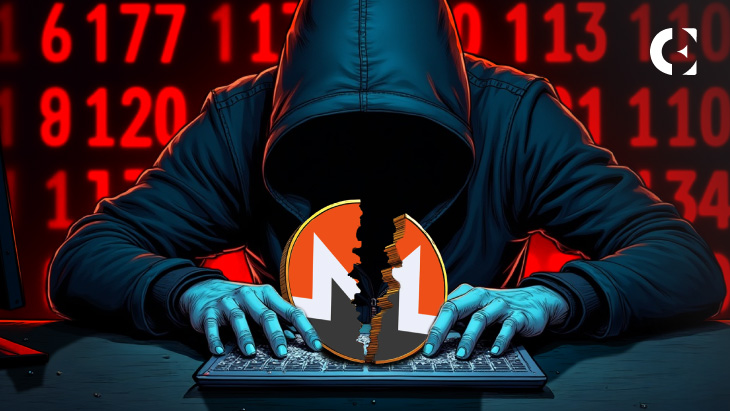- The Qubic mining pool has launched a 51% attack on the Monero network, gaining control over most of its hashrate.
- This attack allows Qubic to rewrite blockchain history, execute double-spend attacks, and censor transactions.
- However, sustaining the attack is estimated to cost $75 million per day.
In a startling development, the Qubic mining pool has successfully executed a 51% attack on the privacy-focused blockchain Monero (XMR). With this, it has gained control of the majority of Monero’s network hashrate.
The Mechanics of the 51% Attack
For context, a 51% attack occurs when a mining pool or entity gains control of more than half of a blockchain’s hashing power. This dominance allows them to reorder blocks, reverse transactions, and even double-spend coins.
In Monero’s case, which relies on the RandomX proof-of-work (PoW) algorithm designed for CPU mining, Qubic’s strategy of accumulating hashrate has now given it significant leverage over the network.
According to Charles Guillemet, CTO at Ledger, a major chain reorganization has already been detected, signaling the success of Qubic’s effort. With the current dominance over Monero’s block production, Qubic has the potential to censor transactions and reverse payments.
The Economic Cost of the Attack
While the attack could be devastating, it comes with an astronomical cost. Qubic’s dominance of the network is estimated to cost around $75 million per day to maintain, making it a high-risk and expensive endeavor.
This raises questions about the ultimate economic benefits of such a move. Yu Xian, founder of on-chain security firm SlowMist, has pointed out that the financial advantages of this attack are still unclear, especially given the heavy daily cost involved.
Despite the costs, Qubic’s efforts appear to be aimed at forcing the Monero community to take notice of potential vulnerabilities in its security model.
Community’s Response and Market Impact on XMR
Meanwhile, the news of the attack has already sparked discussion within the Monero community and beyond. Some claim Qubic has effectively executed a 6-block reorganization rather than a full 51% attack.
In terms of market reaction, XMR has seen a significant drop of around 17%, trading at approximately $248 at the time of writing.
Related: Monero (XMR) Price Prediction 2025, 2026, 2027, 2028-2030
Qubic’s Long-Term Plans and Strategy
Qubic’s approach is based on a “useful proof-of-work” (uPoW) model that aims to attract external computing power to Monero mining, then converts the mined XMR to stablecoins like USDT. This process is then used to buy and burn QUBIC tokens, creating a deflationary loop for its own token economy.
Qubic’s founder, Sergey Ivancheglo, has been vocal about his intention to demonstrate majority control of Monero’s hashrate between August 2 and August 31. To further emphasize the risks, Qubic temporarily stopped reporting its pool hashrate.
As Qubic’s control of Monero’s network hashrate expands, the development may highlight a fundamental vulnerability in Monero’s proof-of-work model. It could significantly impact the trust that the Monero community and crypto investors have in the network.
Related: Best Monero Wallets in 2025: Safe and Private Options
Disclaimer: The information presented in this article is for informational and educational purposes only. The article does not constitute financial advice or advice of any kind. Coin Edition is not responsible for any losses incurred as a result of the utilization of content, products, or services mentioned. Readers are advised to exercise caution before taking any action related to the company.







